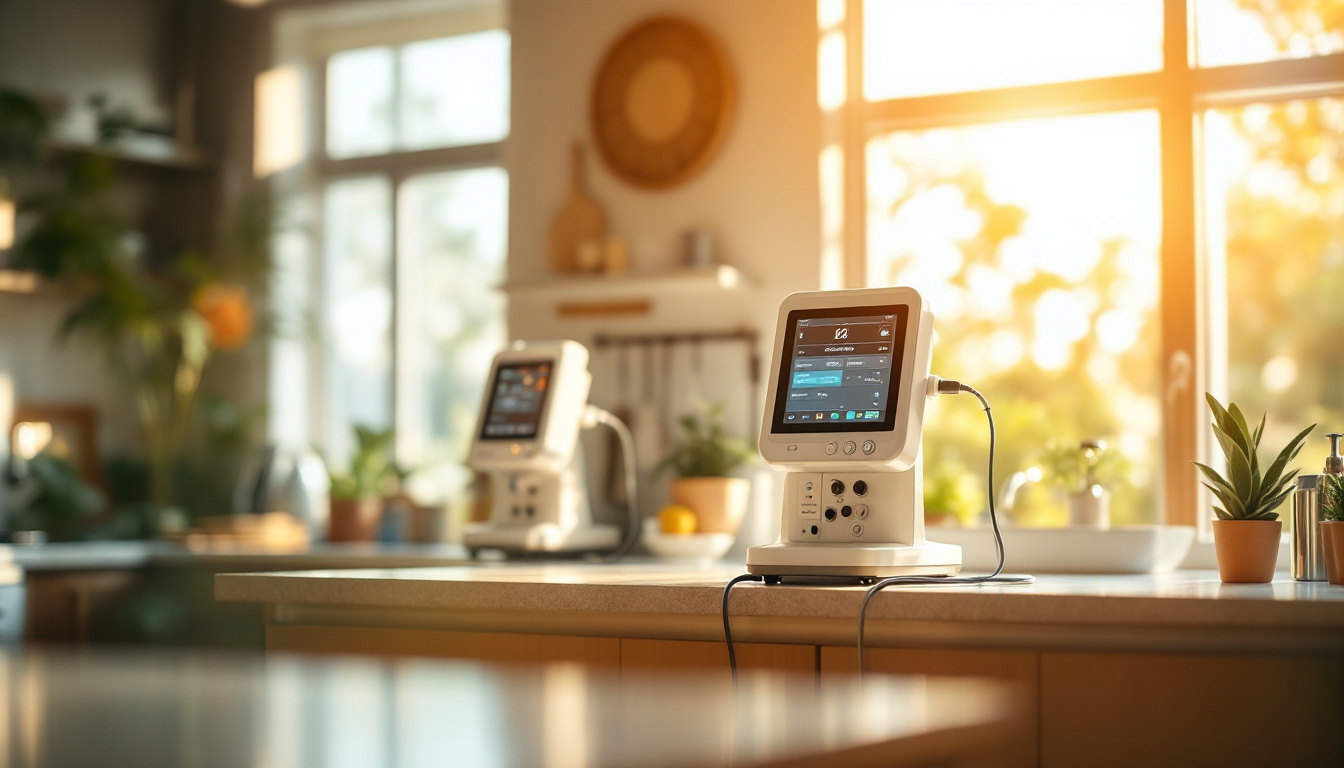Comparing GLP regulatory standards

Introduction to GLP and Its Regulatory Context
Good Laboratory Practice (GLP) standards are essential for maintaining the reliability and integrity of non-clinical laboratory studies, especially in regulatory submissions for chemicals and pharmaceuticals. Understanding these standards and their comparisons with similar standards like GMP and GCP is crucial for professionals in pharmaceuticals and related fields.
What Defines Good Laboratory Practice (GLP)?

What are Good Laboratory Practice (GLP) standards?
Good Laboratory Practice (GLP) standards are a set of principles designed to promote quality and integrity in non-clinical laboratory studies. They ensure that studies are planned, executed, recorded, and reported systematically, maintaining high standards essential for regulatory compliance.
These guidelines focus on aspects such as training of personnel, proper organization, adequate facilities, equipment maintenance, and detailed standard operating procedures (SOPs). By adhering to GLP, laboratories can produce reliable data that is accepted internationally, facilitating regulatory approvals for new chemicals and pharmaceuticals.
Application of GLP in regulatory submissions
GLP is crucial when it comes to regulatory submissions, particularly in toxicological studies required for Investigational New Drug (IND) applications. Here are some points highlighting its significance:
- Data Reliability: Ensures that test results are credible and reproducible.
- Efficiency in Approvals: Streamlines the process of regulatory review, enhancing the speed of product approval.
- Comprehensive Documentation: Requires thorough record-keeping that aids in future audits and inspections.
In essence, GLP lays the groundwork for safety assessments prior to new products entering the market, directly impacting public health and safety by regulating the quality of preclinical research.
Contrasting GLP with GMP Requirements

What is the difference between GLP and GMP?
GLP (Good Laboratory Practice) and GMP (Good Manufacturing Practice) are both integral to maintaining quality within their respective domains, yet they serve distinct functions across the product development lifecycle.
Focus Area:
- GLP emphasizes the reliability and integrity of non-clinical laboratory studies during research, concentrating on protocols, rigorous recordkeeping, and management approval structures.
- GMP, on the other hand, ensures that products are consistently manufactured to specified quality standards, focusing heavily on consumer safety, contamination prevention, and efficacy during the manufacturing phase.
Key Components:
- GLP guidelines involve organized management, trained personnel, and comprehensive study documentation that supports regulatory submissions.
- GMP regulations enforce strict controls across the manufacturing process, often summarized as the 'Five Ps': People, Processes, Premises, Products, and Procedures.
Overall, GLPs govern the testing and data generation essential for regulatory compliance, while GMPs are crucial during the production and quality assurance stages of the final product.
Exploring the Distinctions Between GLP and GCP Standards

Overview of GLP and GCP
Good Laboratory Practice (GLP) and Good Clinical Practice (GCP) are essential quality frameworks governing laboratory and clinical research, respectively. GLP regulations ensure the reliability and integrity of laboratory data, particularly in non-clinical experiments. In contrast, GCP guidelines, overseen by the International Conference on Harmonization (ICH), focus on safeguarding participants and maintaining the scientific quality of clinical trials.
GLP emphasizes thorough documentation, study director oversight, and adherence to standard operating procedures (SOPs) to foster trustworthy laboratory results. Meanwhile, GCP is structured around the ethical considerations of clinical trial methodology, including the need for protocols to be reviewed by an Institutional Review Board (IRB).
What is the difference between GLP and GCP regulations?
The distinctions between GLP and GCP regulations can be summarized as follows:
| Aspect | GLP | GCP |
|---|---|---|
| Focus | Laboratory data integrity and reliability | Ethical treatment of participants and clinical data integrity |
| Oversight | Study director and quality assurance roles | Multiple investigators at clinical sites; IRB oversight |
| Data Requirements | Requires archiving of raw data and detailed study protocols | Involves additional elements like an investigator's brochure |
| Applications | Applied to non-clinical studies (e.g., toxicity testing) | Relevant to clinical trials involving human subjects |
Both GLP and GCP play critical roles in the research landscape, ultimately ensuring the safety, efficacy, and ethical considerations of pharmaceuticals and other products.
Core Principles of Good Laboratory Practices (GLP)

What are the fundamental points of GLP?
The fundamental points of GLP (Good Laboratory Practices) encompass guidelines established by the FDA to ensure the reliability of non-clinical laboratory studies related to product safety and efficacy. These GLP standards are vital for maintaining integrity throughout the research process.
A significant aspect of GLP is its emphasis on rigorous documentation. Each laboratory activity, from sample handling to animal treatment, must be meticulously recorded. This extensive documentation is crucial for reliable data that can be audited or reviewed, reinforcing accountability in research protocols.
Another essential element is humane practices. GLP requires that animal welfare is prioritized, ensuring that studies adhere to ethical guidelines when involving test subjects. This care extends to providing clear protocols that must be documented, promoting humane treatment throughout the study.
Moreover, an ongoing stability program is mandated to monitor the longevity and reliability of products even after marketing. This program aids in the early detection of potential issues regarding product stability and integrity. GLP also requires the technical transfer of testing methods to be accompanied by written protocols. This ensures that quality and consistency are maintained when shifting methods between different labs.
Lastly, identifying and addressing Out of Expectation (OOE) events is critical within GLP. These deviations from expected results need prompt attention, as they can significantly impact compliance and the overall quality of the products being studied.
GLP and CLIA: Comparing Regulatory Roles in Biomarker Assays

How do GLP and other standards like CLIA differ in regulatory requirements for biomarker assays?
GLP (Good Laboratory Practice) and CLIA (Clinical Laboratory Improvement Amendments) differ significantly in their regulatory requirements for biomarker assays due to their distinct scopes and applications.
GLP is focused on maintaining the quality and integrity of nonclinical studies, specifically in the context of drug safety and efficacy evaluation. It ensures rigorous standards are met during preclinical research involving nonclinical specimens. This includes the generation of reliable data that supports safety assessments before any clinical trials can begin.
On the other hand, CLIA is concerned with the quality of laboratory testing performed on human samples. It emphasizes the need for accuracy and reliability in clinical tests crucial for patient care. Under CLIA guidelines, clinical laboratories are required to perform comprehensive validations of methods used for primary clinical endpoints. For exploratory endpoints, the validation requirements are less stringent, often allowing a fit-for-purpose approach based on guidelines from organizations such as CAP (College of American Pathologists) and CLSI (Clinical and Laboratory Standards Institute).
Regulatory scopes and requirements
The comparison table below illustrates the core differences between GLP and CLIA:
| Aspect | GLP | CLIA |
|---|---|---|
| Focus Area | Nonclinical research | Clinical laboratory testing |
| Sample Types | Nonclinical specimens (e.g., toxicology) | Human samples |
| Validation Required | Less stringent for exploratory work, rigorous for compliance | Full method validation for primary endpoints, fit-for-purpose for exploratory endpoints |
| Oversight Body | FDA, OECD | CMS (Centers for Medicare & Medicaid Services) |
| Documentation Emphasis | Comprehensive record keeping and adherence to SOPs | Method validation and proficiency testing requirements |
Thus, while both GLP and CLIA set high standards to ensure quality and reliability in laboratory standards, the specific requirements of GLP and CLIA reflect their tailored roles for nonclinical and clinical applications in the lifecycle of drug development.
Roles of Analytical Chemists Under GLP Standards
What are the roles of analytical chemists in GLP compliance within drug development?
Analytical chemists serve as the backbone of GLP compliance in drug development. Their primary responsibility involves developing and validating analytical methods that accurately characterize test articles. This includes determining their identity, strength, purity, and composition—factors that are critical for regulatory submissions.
They leverage established guidelines, such as ICH M10, to ensure drug concentration measurements in biological samples are precise. This adherence to rigorous standards is essential for maintaining the integrity of data generated during studies.
Moreover, good documentation practices (GDocP) are crucial. Analytical chemists meticulously follow Standard Operating Procedures (SOPs) to uphold the accuracy and reliability of laboratory results. This level of detail is necessary for preserving the evidence of compliance and integrity.
In addition, they ensure a chain of custody for test materials. This systematic approach guarantees that all materials and data are accounted for throughout the study process, enhancing the credibility of the results.
By supporting GLP principles, analytical chemists significantly contribute to the trustworthiness of safety data submitted to regulatory bodies like the FDA. Their role is vital for facilitating the approval of new drugs and ensuring public health safety.
The EPA's Role in GLP Compliance and Its Distinctive Features
EPA's GLP Regulations Under FIFRA and TSCA
The Environmental Protection Agency (EPA) has established Good Laboratory Practice Standards (GLPS) within the framework of the Federal Insecticide, Fungicide, and Rodenticide Act (FIFRA) and the Toxic Substances Control Act (TSCA). These regulations ensure that test data submitted for pesticide product registration meet strict integrity and quality measures. By aligning closely with the FDA's GLP regulations, the EPA facilitates a smoother compliance experience for laboratory managers and toxicologists involved in pesticide studies.
Major Differences Between EPA and FDA GLP Compliance
While the EPA and FDA GLP regulations share many similarities (nineteen sections are nearly identical), notable differences exist:
| Aspect | EPA GLPS Regulations | FDA GLP Regulations |
|---|---|---|
| Scope | Broader, includes pesticides | Focused on pharmaceuticals |
| Record Retention Period | Minimum 10 years | Minimum 5 years |
| Compliance Statement | Requires a Statement of Compliance | Not typically required |
| Effects of Noncompliance | Significant legal implications | Similar consequences outlined |
These differences highlight operational factors that laboratories must consider when conducting studies under EPA GLPS compared to FDA GLPs. The EPA emphasizes longer record retention and specific compliance attestations, underscoring its rigorous approach to maintaining study integrity.
Conclusion: Navigating the Complexity of GLP Standards
Comparing GLP regulatory standards gives insight into the intricate landscape of regulatory compliance. With differences in focus, scope, and application, understanding GLP alongside GMP, GCP, and other standards such as CLIA provides critical knowledge for professionals involved in drug development and safety testing. Successful navigation of these standards ensures data credibility, participant safety, and consumer protection across various stages of product development, ultimately supporting the approval of safe and effective new products.
References
- Understanding the Regulations: GLP vs GCP vs GMP - Enago
- Good Laboratory Practices vs. Good Manufacturing Practices
- Similarities and Differences Between Good Laboratory Practice and ...
- Review and comparison of quality standards, guidelines and ...
- Understanding Good Laboratory Practice (GLP) Standards - Visikol
- Good Laboratory Practice and Compliance Monitoring - OECD
- GLP vs. Non-GLP toxicology studies: When to use which guidelines?
- What is the Difference between GLP and GMP
- A Guide to Good Laboratory Practice (GLP) | SafetyCulture



































































































